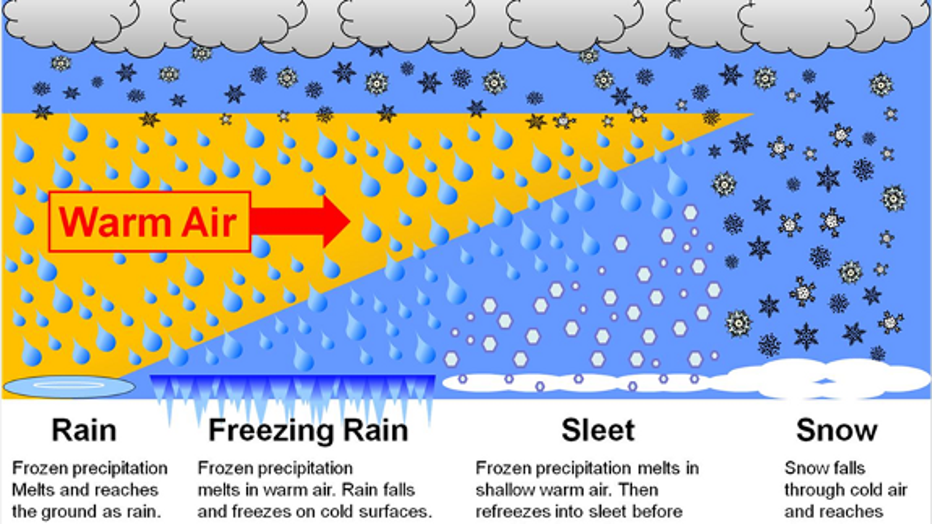How to make your own snow!
Science outside of the classroom: Making your own snow
In Central Texas, snow is a rare sight, but other types of wintry precipitation, like sleet and freezing rain, are a little more common.
AUSTIN, Texas - Making homemade snow is a simple, fun activity to do with your little ones and it’s a great way to start talking about other types of winter weather.
For this activity, you’ll need:
- 1 ¼ cup baking soda
- ¼ cup hair conditioner
- 1 container for mixing
Combine baking soda and hair conditioner together in the container and then mix with a spoon or by hand until combined. Voila! Now you’ve got snow and it’s not even freezing outside. Let us know what you make with it!

(National Weather Service)
How is snow formed in the atmosphere?
Snow forms when a very cold water droplet freezes in the atmosphere, making an ice crystal. As the ice crystal travels through the air, more water freezes onto it, making it grow.
When it gets heavy enough, it will eventually fall to the ground. If the air is freezing all the way to the ground, the ice crystal will make it to the ground and we’ll see snow at the surface. Snowball fight!
Other types of wintry precipitation in Central Texas
Snow is a rare sight, but other types of wintry precipitation, like sleet and freezing rain, are a little more common.
To understand the difference between snow, sleet, and freezing rain, you have to know that different layers of the atmosphere have different temperatures and that the air doesn’t always get colder as you rise. Sometimes, temperatures at the surface are freezing, but air a few hundred or thousand feet up is still above freezing.
Sleet forms when snow falls through the air that’s above freezing and melts. By now, it’s turned into a raindrop and continues to fall. If that raindrop encounters freezing air on its way to the surface, it will refreeze into an ice pellet or sleet. At the surface, it looks like tiny, translucent ice pellets.
Freezing rain occurs in a similar process, only the raindrop doesn’t get a chance to re-freeze before falling to the ground. In this set-up, rain hits the freezing ground and will re-free on contact.
This can be very dangerous because the clear ice is difficult to see on the wet ground, resulting in slips, slides, and possibly even car accidents.
Another form of wintry precipitation you may hear of is graupel. Graupel is often mistaken for sleet because they are similar in size. Graupel forms when super-cooled water droplets collect on a falling snowflake. Graupel is also referred to as snow pellets, snow grains, or soft hail.

